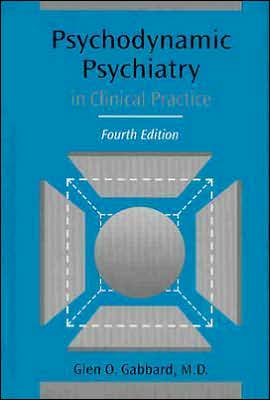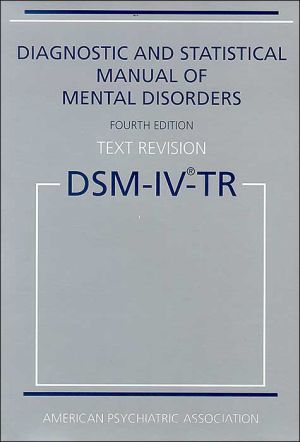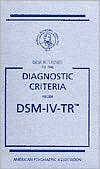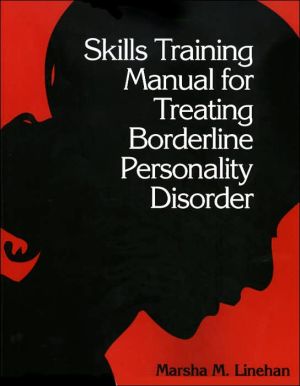Psychodynamic Psychiatry in Clinical Practice
This new edition of the classic psychodynamic psychiatry text, Psychodynamic Psychiatry in Clinical Practice, continues its tradition as the most readable, scholarly, and practical introduction to psychodynamic theory and practice available. Kept within arm's reach of all mental health professionals, this invaluable "one-stop" reference will prepare you to teach students and treat patients more effectively with its truly integrative psychodynamic approach.\ The author has meticulously updated...
Search in google:
This new edition of the classic psychodynamic psychiatry text, Psychodynamic Psychiatry in Clinical Practice, continues its tradition as the most readable, scholarly, and practical introduction to psychodynamic theory and practice available. Kept within arm's reach of all mental health professionals, this invaluable “one-stop” reference will prepare you to teach students and treat patients more effectively with its truly integrative psychodynamic approach.The author has meticulously updated every chapter of the previous edition, adding new illustrative case examples and discussing the most recent research findings and concepts in psychodynamic psychiatry. It introduces the basic principles of psychodynamic psychiatry and the four fundamental theoretical frameworks derived from psychoanalytic theory: ego psychology, object relations theory, self psychology, and attachment theory. Drawing on the latest breakthroughs in neuroscience to validate the latest psychodynamic thinking, the author includes neuroanatomical illustrations that highlight the need to integrate psychoanalytic theories of development with brain development and the impact of environment on gene expression.The eminently practical Psychodynamic Psychiatry in Clinical Practice is organized into three distinct sections based on DSM-IV diagnoses: • Section I, Basic Principles and Treatment Approaches in Dynamic Psychiatry, begins by laying a foundation in psychoanalytic theory. It focuses on how to apply psychoanalytic theory to specific types of evaluation and treatment, including psychodynamic assessment, brief therapy, individual and group psychotherapy, family and marital therapy, pharmacotherapy, and hospital/partial hospital treatment.• Section II, Dynamic Approaches to Axis I Disorders, covers the major psychiatric disorders and discusses how to apply psychodynamic understanding to the treatment of patients with these disorders.• Section III, Dynamic Approaches to Axis II Disorders, provides a psychodynamic understanding of personality disorders and covers in detail the principles of psychodynamic psychotherapy for these conditions. The fourth edition of Psychodynamic Psychiatry in Clinical Practice details the theory of psychodynamic psychotherapy and the adaptation of psychodynamic thinking to specific disorders. As such, it is an ideal companion to Dr. Gabbard's Long-Term Psychodynamic Psychotherapy: A Basic Text, which details the techniques of dynamic psychotherapy. The bestselling Psychodynamic Psychiatry in Clinical Practice is the definitive reference for training programs of all kinds at all levels. This new edition provides a clear synthesis of diagnostic understanding and treatment unmatched in the literature. Marked by Dr. Gabbard's distinctly lucid and compelling prose, it is the ultimate psychiatric guide for the busy clinician and mental health student. Doody Review Services Reviewer:David A. Garfield, M.D.(Rosalind Franklin University of Medicine and Science)Description:This is the fourth edition of a classic staple of psychiatric education in psychodynamic psychiatry. Its unique contribution is to meld pertinent neuroscience findings with psychoanalytic knowledge and to bring it to bear on the clinical setting.Purpose:The purpose of this new edition is to more fully incorporate the findings of biological psychiatry into theories about the human mind and to illustrate how the interaction between genes and the environment are confirming and shaping psychoanalytic views of development. These are the most pertinent questions that face the field of psychiatry today and the author adeptly and cogently meets these important objectives.Audience:This book is primarily written for psychiatrists and psychiatric students. It is however, of tremendous value for psychoanalysts, psychologists, social workers and other psychotherapists. The author, Glen Gabbard, MD, is the Brown Foundation Chair of Psychoanalysis and Professor in the Department of Psychiatry and Behavioral Sciences at Baylor College of Medicine. Dr. Gabbard has become the leading spokesman for the clinical and theoretical integration of psychoanalysis in modern psychiatry.Features:The book is divided into three sections: Basic Principles and Treatment Approaches in Dynamic Psychiatry; Dynamic Approaches to Axis I Disorders; and Dynamic Approaches to Axis II Disorders. The fourth edition significantly revamps each chapter. New empirical findings have been added and less relevant material has been pruned. The author's easy to understand explanation of how the environment impacts on gene expression is brilliant and innovative. It brings a new feel and in-depth understanding to how nature and nurture are mutually influencing. New graphics in this edition include brain scans and diagrams that are crisp and helpful.Assessment:The fourth edition is worth owning and represents a real difference from previous editions. Dr. Gabbard is one of the few people in psychoanalysis today who can selectively present essential material that brings psychoanalytic ideas into the twenty-first century. Findings from animal studies bring focus to the importance of attachment in psychotherapy and fMRI studies on empathy reveal clinically relevant distinctions and similarities between physical and emotional pain. These are but a few of the "not to be missed" pearls of integration that the author delivers.
1Basic principles of dynamic psychiatry32The theoretical basis of dynamic psychiatry313Psychodynamic assessment of the patient694Treatments in dynamic psychiatry : individual psychotherapy935Treatments in dynamic psychiatry : group therapy, family/marital therapy, and pharmacotherapy1296Treatments in dynamic psychiatry : dynamically informed hospital and partial hospital treatment1577Schizophrenia1818Affective disorders2139Anxiety disorders24910Dissociative disorders28311Paraphilias and sexual dysfunctions31312Substance-related disorders and eating disorders34513Dementia and other cognitive disorders37914Cluster A personality disorders : paranoid, schizoid, and schizotypal40115Cluster B personality disorders : borderline42716Cluster B personality disorders : narcissistic48317Cluster B personality disorders : antisocial51318Cluster B personality disorders : hysterical and histrionic54119Cluster C personality disorders : obsessive-compulsive, avoidant, and dependent571
\ From The CriticsReviewer: David A. Garfield, M.D.(Rosalind Franklin University of Medicine and Science)\ Description: This is the fourth edition of a classic staple of psychiatric education in psychodynamic psychiatry. Its unique contribution is to meld pertinent neuroscience findings with psychoanalytic knowledge and to bring it to bear on the clinical setting.\ Purpose: The purpose of this new edition is to more fully incorporate the findings of biological psychiatry into theories about the human mind and to illustrate how the interaction between genes and the environment are confirming and shaping psychoanalytic views of development. These are the most pertinent questions that face the field of psychiatry today and the author adeptly and cogently meets these important objectives.\ Audience: This book is primarily written for psychiatrists and psychiatric students. It is however, of tremendous value for psychoanalysts, psychologists, social workers and other psychotherapists. The author, Glen Gabbard, MD, is the Brown Foundation Chair of Psychoanalysis and Professor in the Department of Psychiatry and Behavioral Sciences at Baylor College of Medicine. Dr. Gabbard has become the leading spokesman for the clinical and theoretical integration of psychoanalysis in modern psychiatry.\ Features: The book is divided into three sections: Basic Principles and Treatment Approaches in Dynamic Psychiatry; Dynamic Approaches to Axis I Disorders; and Dynamic Approaches to Axis II Disorders. The fourth edition significantly revamps each chapter. New empirical findings have been added and less relevant material has been pruned. The author's easy to understand explanation of how the environment impacts on gene expression is brilliant and innovative. It brings a new feel and in-depth understanding to how nature and nurture are mutually influencing. New graphics in this edition include brain scans and diagrams that are crisp and helpful.\ Assessment: The fourth edition is worth owning and represents a real difference from previous editions. Dr. Gabbard is one of the few people in psychoanalysis today who can selectively present essential material that brings psychoanalytic ideas into the twenty-first century. Findings from animal studies bring focus to the importance of attachment in psychotherapy and fMRI studies on empathy reveal clinically relevant distinctions and similarities between physical and emotional pain. These are but a few of the "not to be missed" pearls of integration that the author delivers.\ \ \ \ \ Australia and New Zealand Journal of PsychiatryI would recommend this book to anyone interested in the interface between psychiatry and the psychotherapies. For trainees, in particular, it provides an integrative appreciation of psychodynamic psychiatry in an accessible style that does not assume a lot of prior knowledge.\ \ \ \ Canadian Journal of PsychiatryIt is rare to find a large, single authored text book in this era of edited texts. It was a treat to discover that Glenn Gabbard continues to update his classic text, now in its fourth edition... With this volume, Gabbard continues the project of relating the findings of neuroscience to the dynamic understanding of the individual, which be began in his third edition. Ever a consummate teacher, he weaves recent research into a practical approach to the psychodynamics of psychiatric care. He uses a good number of clinical examples.\ \ \ \ \ \ BooknewsDiscusses the basic theoretical principles of dynamic psychiatry and the major treatment modalities, including individual psychotherapy, group psychotherapy, family/marital therapy, pharmaco-therapy, and dynamically informed hospital treatment, and applies the principles and therapeutic approaches to the major Axis I and Axis II disorders in DSM-III-R. Annotation c. Book News, Inc., Portland, OR (booknews.com)\ \ \ \ \ 4 Stars! from Doody\ \








